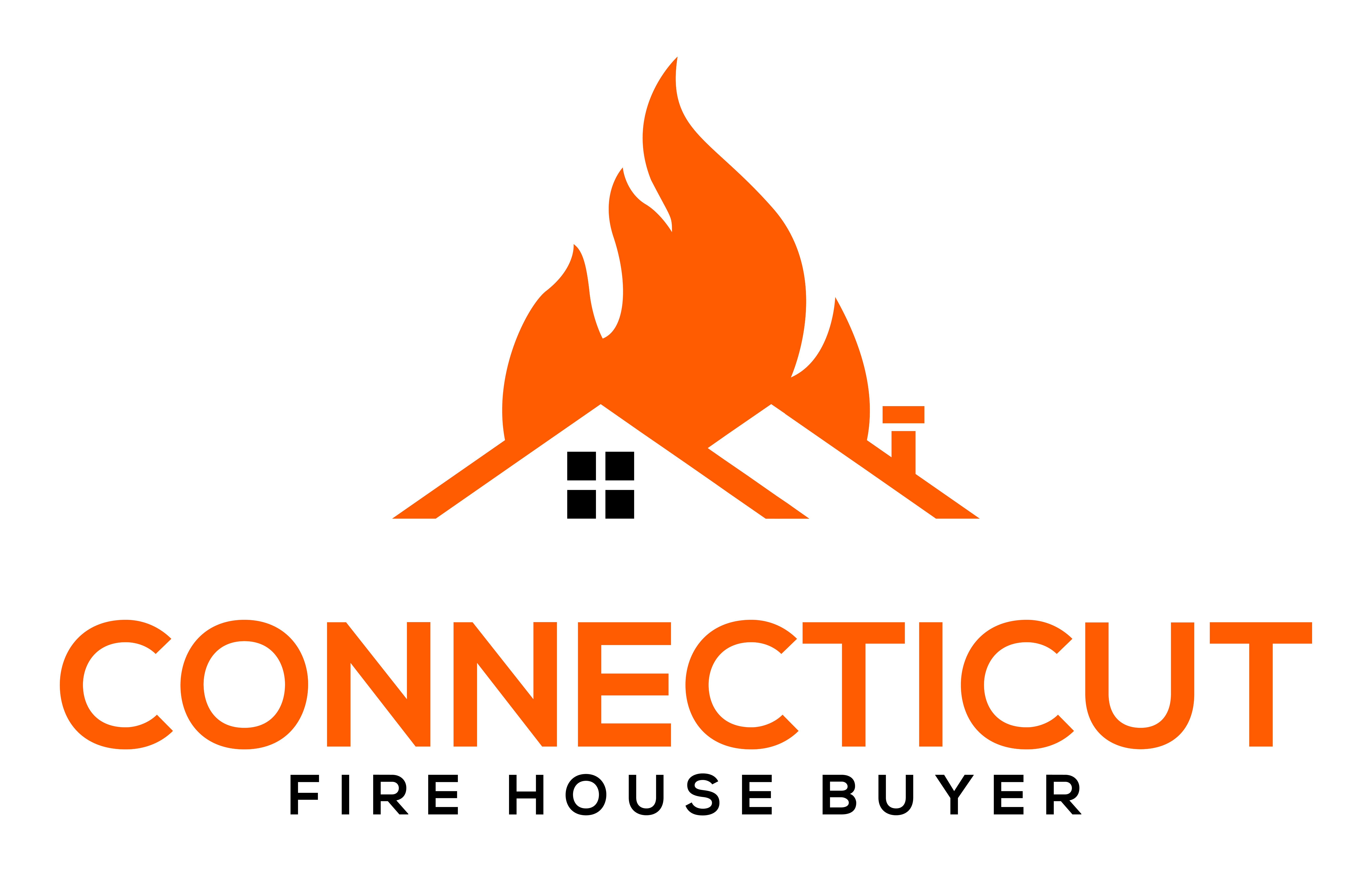Selling A House With Fire-Damaged In Stamford
I buy fire damaged houses in Stamford cash as is, get a fair offer today


We’ll Give You A No Pressure As-Is Cash Offer in 24 Hours
We’re Local, Can Close in 10 Days, Fast Cash




How To Sell A Fire Damaged House As Is In Stamford
Thinking about selling your Stamford, Connecticut home as-is? We make it easy for homeowners in neighborhoods like Shippan, Glenbrook, and Springdale with our simple 3-step process. Skip the hassle of traditional sales—get a free cash offer and close in as little as 7 days, or on your schedule. Ready to move fast? Contact Sell Fire Damaged House Stamford today.



Fill Out Form
Fill out our form and we’ll get started on your free offer! No obligations.



Receive Cash Offer
We’ll research your property and call you with our fair offer in cash!


You Get Paid!
Money in your bank account at closing. As quick as 7 days!
Sell Your House Fast After a Fire
Selling fire-damaged property in Stamford, CT—including neighborhoods like North Stamford, Cove, and West Side—has never been easier. Our quick, hassle-free process lets you move on fast and focus on what matters most.
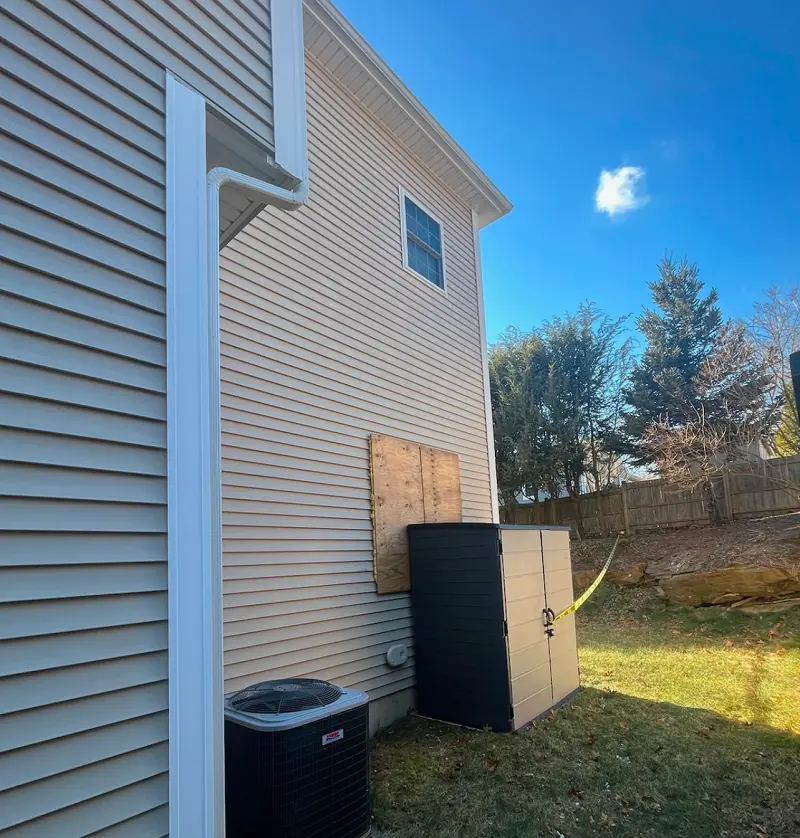
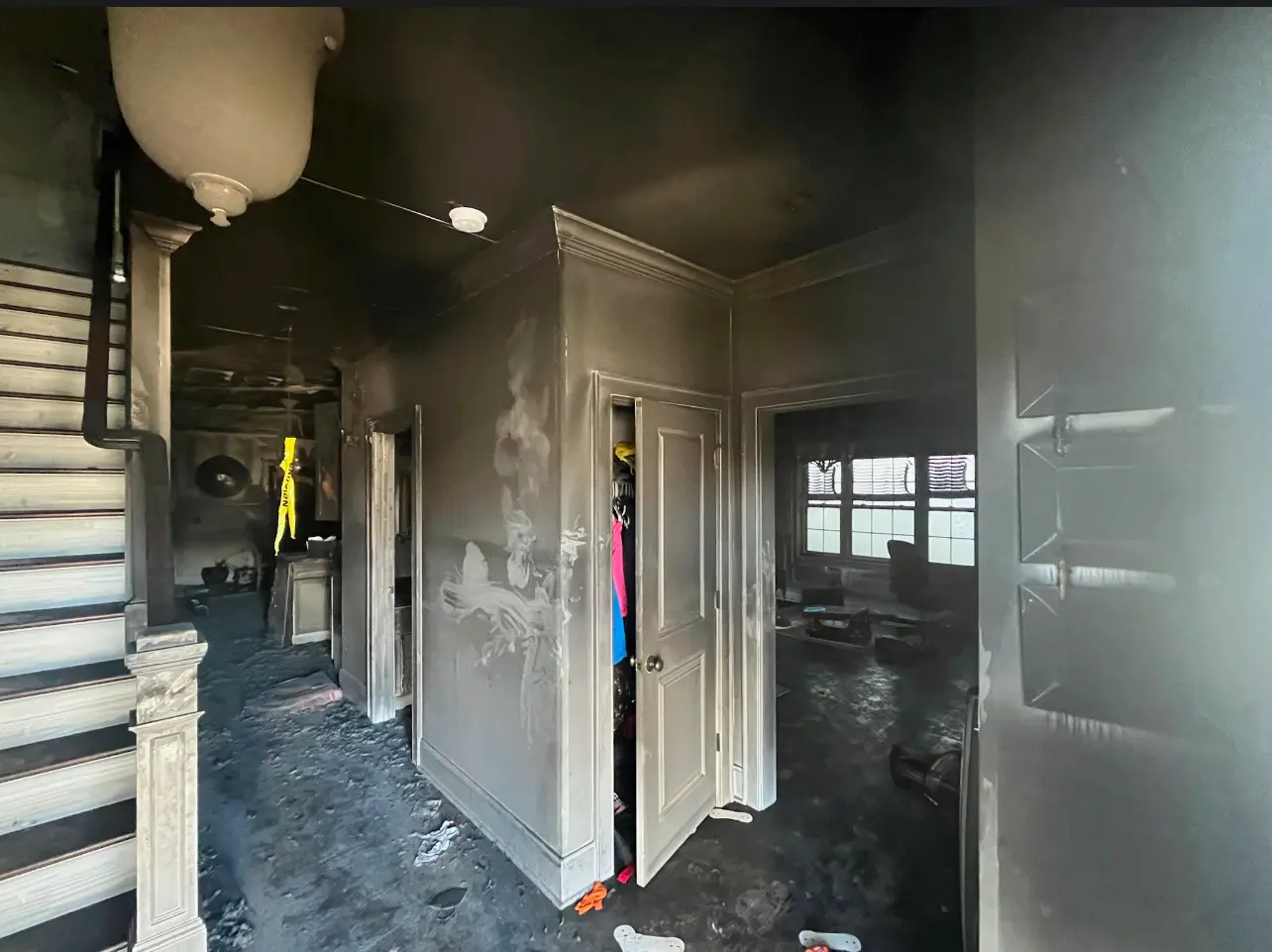
How To Sell A Burned Down Fire Damaged House In CT
- We Buy Fire Damaged Homes
- Selling a fire-damaged house in Stamford requires weighing the pros and cons of various options, such as selling as-is or repair and listing.
- It is important to consult a fire damage restoration contractor to properly assess the damage and estimate repair costs in order to accurately price a house with fire damage.
- In Stamford, it is recommended to disclose fire damage when selling your property in order avoid potential legal disputes & financial liabilities.
We Buy Fire Damaged Homes As Is
We buy homes as-is throughout Stamford, from Downtown and Glenbrook to Springdale and Shippan. Whether you’re facing financial challenges, probate, or just want to skip the hassle of MLS listings, inspections, and realtors, we make selling easy. No showings, no stress—just a simple, straightforward sale on your terms.

No Home Repairs
Selling your house as is means we take care of all the hassles!

No Agents
Skip paying for agent commission. We make home sales simple!

No Fees
Not only do we have NO agent or iBuyer fees, we cover closing costs!

Fast Closing
Sell your home in 7 days or on your timeline! We buy homes fast.

No Obligations
Take it or leave it. Our free cash offers come with no obligations.

Hassle Free
No agents. No inspection. No delays. We buy real estate as-is for cash!
Can I Sell A Fire-Damaged House In Stamford?
Although selling a fire-damaged house in Stamford is possible, it comes with its own set of challenges. The market value of the property is likely to be affected by the damage caused by the fire. This means that selling at a desirable price may be difficult. Additionally, potential buyers may be more inquisitive and cautious when considering such properties.
When selling your fire-damaged house in Stamford, you can either restore it or sell it as-is. If you decide to restore the property, you may face high repair costs and a lengthy rebuilding process. On the other hand, selling as-is can save you time and money, but may result in a lower selling price. Regardless of your decision, honesty about the damage and required repairs is critical.
Sell Fire Damaged House Stamford!
If a simple home sale that closes on your schedule sounds like what you need, come check us out. You can request a free quote for your house by filling out our form below!
We’ll Give You A No Pressure As-Is Cash Offer in 24 Hours
We’re Local, Can Close in 10 Days, Fast Cash
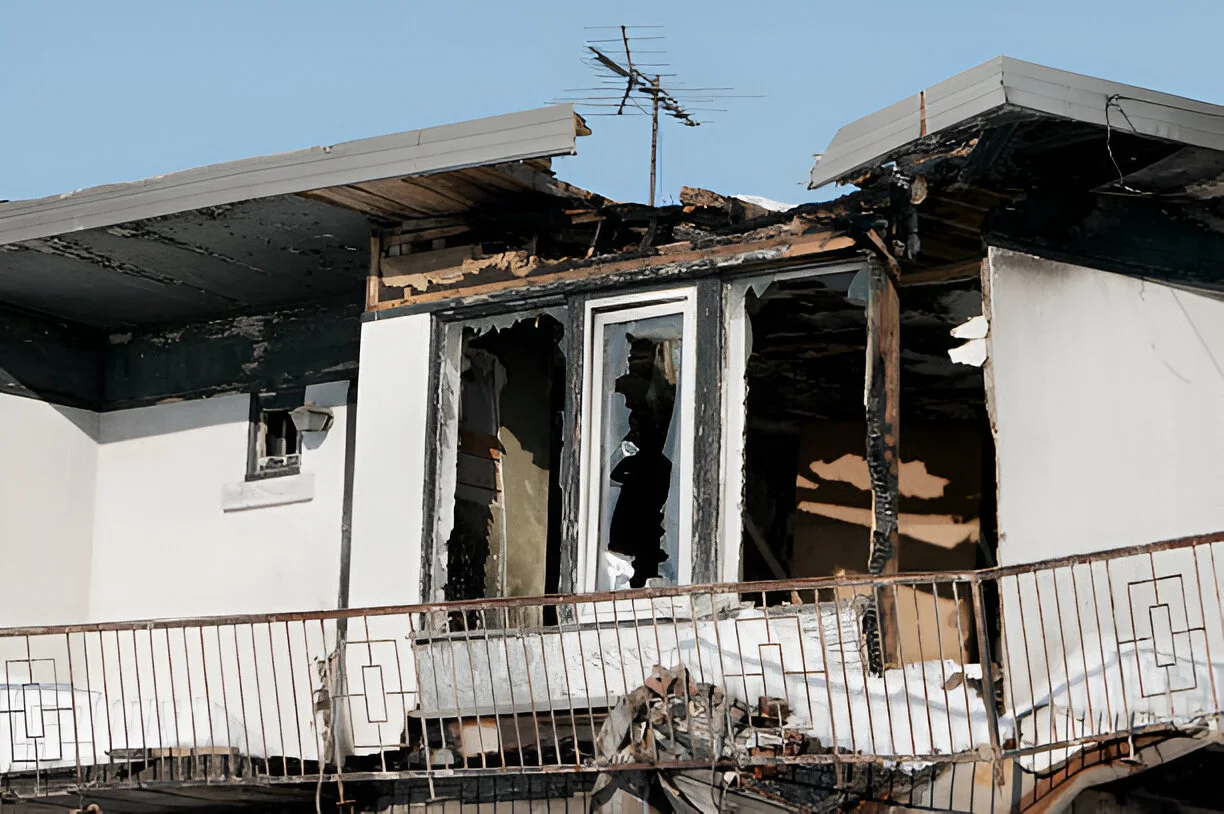
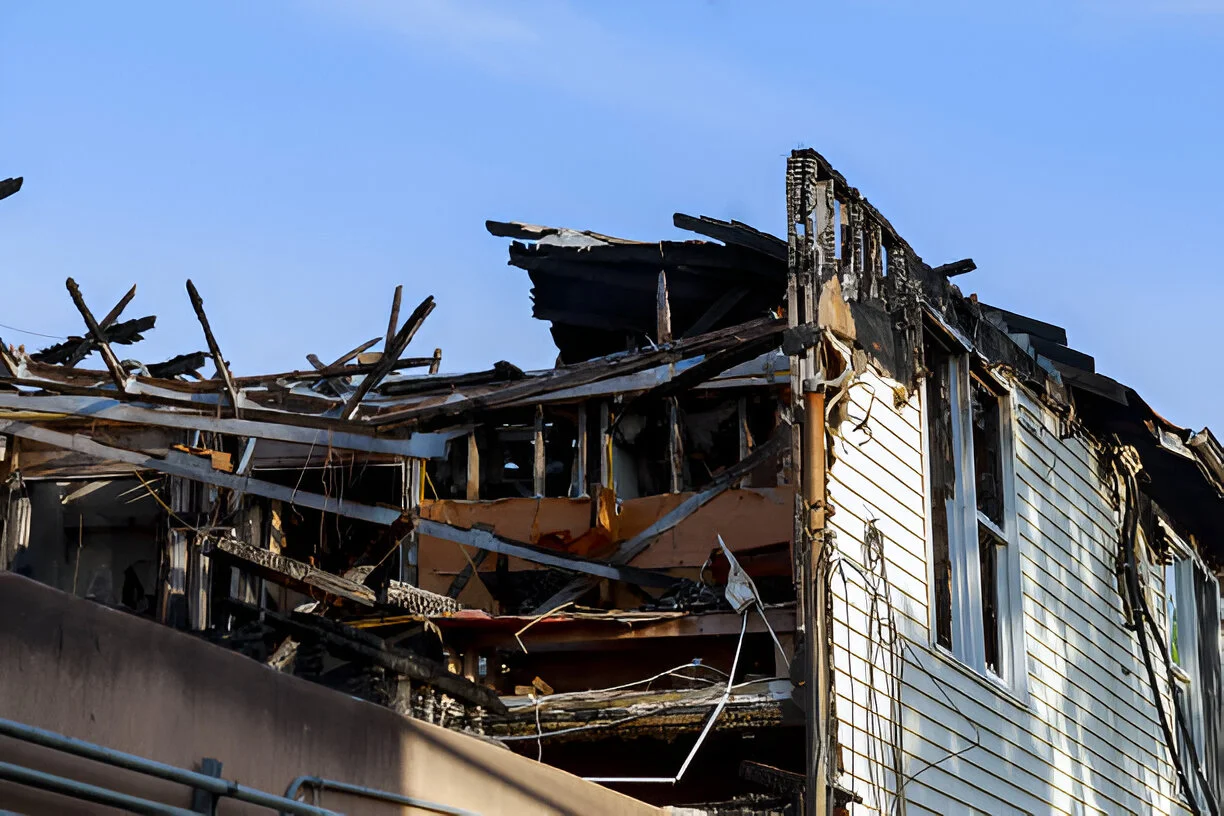
The Stamford Fire Department operates nine career fire stations spread throughout the city. These stations are staffed by over 270 career firefighters and house a variety of apparatus, including pumpers, trucks, and rescue vehicles. The nine stations ensure rapid response times and coverage for Stamford’s diverse neighborhoods, reflecting the city’s commitment to public safety and emergency readiness.
Fire damage restoration costs in Stamford, Connecticut, vary depending on the severity of the fire, the size of the property, and the specific services required. Here’s a detailed breakdown based on current local estimates:
Average Cost Range
- Per Square Foot: Fire damage restoration in Stamford typically costs $13 to $14 per square foot for materials alone. Total project costs, including labor, materials, equipment, and cleanup, generally fall within $4.00 to $6.50 per square foot.
- Typical Project Totals: Homeowners commonly pay between $3,000 and $40,000 for fire restoration, with smaller jobs (like smoke damage cleanup) starting around $2,000–$12,000, and major structural restorations reaching $15,000–$25,000 per room for severe damage.
Cost Factors
- Extent of Damage: Larger or more severely damaged homes will have higher restoration costs.
- Type of Damage: Smoke and soot cleanup, water damage from firefighting, and mold remediation can add significantly to the total.
- Additional Fees: Permits, inspection fees, and general contractor costs may add $336–$420 to the total project cost.
- Contents Restoration: Cleaning and restoring personal property (furniture, electronics, clothing) can cost an additional $1,500–$5,000.
Insurance Considerations
Most homeowners’ insurance policies cover fire restoration, but coverage varies. It’s advisable to consult with your insurer and restoration contractor for a detailed claim and estimate process.
The cost to build a new construction home in Stamford, Connecticut, in 2025 generally ranges from $140 to $300 per square foot, depending on the quality of construction and level of customization:
- Value-conscious/basic build: $140–$200 per square foot
- Mid-range build: $200–$300 per square foot
- High-end/luxury build: $300–$600 per square foot or more
Example Cost Calculation
For a 2,500-square-foot home:
- Basic build: 2,500 × $150 = $375,000
- Mid-range: 2,500 × $250 = $625,000
- High-end: 2,500 × $400 = $1,000,000
Additional Costs to Consider
- Architectural/design fees: These are typically charged separately and vary by project scope.
- Land: In Stamford, land costs can range from $150,000 to over $500,000 per acre, depending on location and lot size.
- Permits and fees: Building permits and related fees typically add several thousand dollars. Stamford charges $13 per $1,000 of estimated cost, with minimums and additional application fees.
- Sitework and utilities: Land preparation, excavation, and utility hookups can add $10,000–$50,000 or more, depending on site conditions.
The Stamford, Connecticut real estate market in April 2025 is strong, competitive, and continues to favor sellers.
Key Market Indicators
- Home Prices: The average home value in Stamford is approximately $683,053, up 4.5% over the past year. The median sale price is around $697,416, marking a significant 16.3% increase year-over-year. Other data sources report median sale prices ranging from $605,000 to $699,000, depending on the month and data provider.
- Price per Square Foot: The median price per square foot is $342–$369, up about 8.7% from last year.
- Speed of Sales: Homes are selling rapidly, with the average time to pending at just 11 days for many listings. Some homes, especially those priced well, can receive multiple offers and go pending even faster.
- Inventory: There were 355 homes for sale in March 2025, a 13.8% increase from the previous month, indicating a slight easing but still tight supply.
- Over-Ask Sales: About 57.7% of sales are closing above list price, reflecting high buyer competition. In March, 64% of homes sold over asking price
- Rental Market: The average rent in Stamford is $2,932/month, which is higher than the national average and has increased 7.4% year-over-year.
Market Dynamics
- Stamford remains a seller’s market: demand continues to outpace supply, pushing prices higher and leading to quick sales.
- Multiple offers are common, and buyers should be prepared for bidding wars, especially in desirable neighborhoods and for well-priced homes.
- Inventory is slowly increasing, but remains below historical norms, so competition among buyers is still strong.
Neighborhood Trends
- North Stamford: Median home price at $1,021,500, up 4.8% year-over-year.
- Downtown Stamford: Median home price at $335,000, down slightly year-over-year, but price per square foot is up 25.7%.
Outlook
More inventory may enter the market as the year progresses, potentially offering buyers more options, but the overall environment is likely to remain competitive
Prices are expected to remain stable or see modest growth for the rest of 2025, supported by strong demand and limited supply.
Stamford is a vibrant city that blends scenic coastal beauty, rich history, and a lively cultural scene. Whether you’re seeking outdoor adventures, family-friendly activities, or a taste of local heritage, Stamford offers a diverse array of attractions that appeal to visitors and residents alike. Here are some of the city’s most well-known and beloved attractions, each offering a unique experience.
- Stamford Museum & Nature Center
- The Stamford Museum & Nature Center is a standout attraction, especially for families and nature enthusiasts. Spanning 118 acres, it combines a working farm, interactive exhibits, hiking trails, a planetarium, and an observatory. Seasonal events like the Maple Syrup Festival add to its appeal, and its mix of art, history, and science makes it a must-visit for all ages.
- Cove Island Park
- Cove Island Park is one of Stamford’s most cherished waterfront destinations. This 83-acre park features beaches, walking and biking trails, birdwatching spots, and picnic areas. It’s ideal for families, nature lovers, and anyone looking to enjoy scenic views of Long Island Sound. The SoundWaters Community Center for Environmental Education is also located here, enhancing its educational value.
- Mill River Park
- Located in downtown Stamford, Mill River Park is an urban oasis offering beautifully landscaped green spaces, walking paths, a riverfront, and seasonal attractions like the David & Marian Nissen Carousel and an outdoor ice rink. The park is a hub for community events and provides a tranquil retreat in the city’s heart.
- Bartlett Arboretum & Gardens
- Bartlett Arboretum & Gardens is a 93-acre botanical garden and nature preserve, perfect for plant lovers and those seeking peace and quiet. With wildflower meadows, formal gardens, and rare champion trees, it’s a favorite for educational programs, garden tours, and seasonal blooms.
- The Palace Theatre
- The Palace Theatre is Stamford’s premier performing arts venue, hosting Broadway shows, concerts, comedy acts, and more. Its historic charm and diverse programming make it a cultural cornerstone and a top choice for an evening out.
- Downtown Stamford
- Downtown Stamford is the city’s vibrant urban core, known for its blend of modernity and history. Here you’ll find excellent shopping, dining, art galleries, and nightlife. The area is also home to public art installations, historic landmarks like the Stamford Cone, and lively events such as the Alive@Five summer concert series.
- Fort Stamford
- Fort Stamford Park is a unique historical site featuring the archaeological remains of a Revolutionary War fort. The park offers walking trails, gardens, and a glimpse into Stamford’s colonial past, making it both a peaceful green space and a destination for history buffs.
- Stamford Harbor Ledge Lighthouse
- Stamford Harbor Ledge Lighthouse is a picturesque maritime landmark that provides insight into the city’s nautical heritage. While access is limited, it’s a favorite for photography and offers beautiful views of the harbor.
- Stamford Town Center
- Stamford Town Center is a major shopping destination in the heart of the city, featuring over 100 stores, dining options, and easy access to downtown attractions. It’s a go-to spot for retail therapy and casual dining.
- Harbor Point Common Part
- Harbor Point Commons Park is a modern waterfront park in the revitalized Harbor Point district. With boardwalks, green spaces, and proximity to restaurants and marinas, it’s perfect for a scenic stroll or relaxing by the water.
Stamford is a city of diverse and distinct neighborhoods, each offering its own lifestyle, amenities, and community feel. Whether you’re seeking waterfront luxury, suburban tranquility, or urban vibrancy, Stamford has a neighborhood to match your preferences. Here are some of the most well-known and noteworthy neighborhoods in Stamford, highlighting what makes each unique.
- Downtown Stamford
- Downtown Stamford is the city’s bustling urban core, known for its high-rise apartments, vibrant nightlife, shopping, and dining. It’s ideal for professionals and those who want to be in the heart of the action, with easy access to the Stamford Transportation Center for commuting. The area is walkable, energetic, and home to major city events and parks like Mill River Park.
- Harbor Point/South End
- Harbor Point, also known as the South End, is Stamford’s modern waterfront redevelopment area. It’s characterized by luxury apartments, trendy restaurants, and proximity to the train station. The neighborhood is highly walkable, features Commons Park and Kosciuszko Park, and is popular with young professionals seeking a lively, amenity-rich environment.
- Shippan
- Shippan is famed for its waterfront estates, private beaches, and peaceful residential streets. It’s one of Stamford’s most exclusive and scenic neighborhoods, offering stunning views of Long Island Sound. Shippan is ideal for those seeking luxury living, privacy, and a coastal lifestyle.
- Glenbrook
- Glenbrook offers a suburban feel with tree-lined streets, single-family homes, and a close-knit community. Its own Metro-North station makes it convenient for commuters, while its affordability and variety of housing attract families and young professionals alike.
- Springdale
- Springdale is a family-friendly neighborhood north of Glenbrook, known for its suburban charm, spacious homes, and local parks. It has its own Metro-North stop and is favored by those seeking a quieter, community-oriented environment with easy access to city amenities.
- North Stamford
- North Stamford is characterized by its large lots, luxury estates, and lush, wooded landscapes. It offers a rural atmosphere within city limits, making it perfect for those seeking privacy, space, and proximity to nature, including attractions like the Bartlett Arboretum & Gardens.
- Newfield-Westover-Turn of River
- This area in northern Stamford combines three neighborhoods—Newfield, Westover, and Turn of River—offering a mix of colonial homes, contemporary residences, and easy access to parks like Mianus River Park. It’s popular for its residential character and community amenities.
- Waterside
- Waterside offers a blend of affordable and high-end waterfront homes, with scenic views of Long Island Sound and proximity to parks like Boccuzzi Park. Its diversity and access to both city and coastal amenities make it attractive to a broad range of residents.
- Belltown
- Belltown is a quieter, primarily residential neighborhood known for its suburban feel and community atmosphere. It’s one of Stamford’s hidden gems, offering a peaceful environment while still being close to downtown and major city amenities.
How to Sell My Fire-Damaged House in Stamford: Expert Tips
A fire can transform a cherished home into an overwhelming challenge in mere minutes. The charred walls and smoke-damaged rooms leave Stamford homeowners facing difficult decisions about their property’s future.
While the path forward might seem unclear, there are multiple proven solutions for selling a fire-damaged house in today’s market.
The real estate environment in Stamford offers several viable options for homeowners dealing with fire damage. From working with specialized cash buyers who can close within days to partnering with experienced realtors who understand distressed properties, you have more choices than you might realize.
Many local investors specifically focus on helping homeowners manage these challenging circumstances, offering streamlined processes that eliminate typical real estate hassles.
Your fire-damaged property still holds value, and understanding how to maximize that value is crucial. From evaluating the extent of structural damage to managing insurance claims and disclosure requirements, each step influences your property’s final selling price.
Local market conditions, repair cost considerations, and various selling methods can significantly impact your outcome. Armed with the right information and strategy, you can transform this challenging situation into a successful property sale that allows you to move forward with confidence.
First Steps After Fire Damage
I’ve helped numerous Stamford homeowners work through the aftermath of house fires, and I can tell you that those first few steps are absolutely crucial. Your actions immediately after a fire can significantly impact your insurance claim and potential property resale opportunities.

Safety Assessment And Documentation
Trust me on this one – never enter your property until the fire department gives you the all-clear. Even when the flames are gone, hidden dangers lurk: weakened floors, toxic fumes, and water-soaked electrical systems can be lethal.
Once you get the green light, grab your phone or camera and document everything. I mean everything. Those photos and videos will be your best friends when dealing with insurance and potential buyers down the road.
Insurance Claim Process
Starting your insurance claim requires a methodical approach. Call your insurance company right away – I’ve seen delays complicate claims unnecessarily. Your insurer will send an adjuster to evaluate the damage and determine your coverage based on your policy terms.

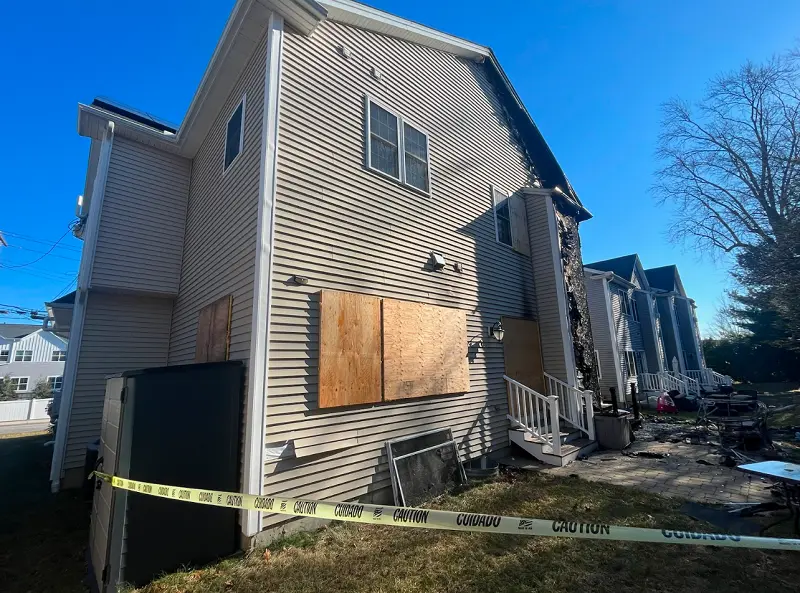
Working With Insurance Adjusters
Think of your insurance adjuster as a key partner in your recovery process. Keep a dedicated notebook for all your conversations, and scan or photograph every document you exchange. Here’s a pro tip I’ve learned: consider hiring a public adjuster. They’re experts who work for you, not the insurance company, and often help secure better settlements
Documenting All Damages
Create your damage inventory like a detective building a case:
• List every damaged item with serial numbers
• Note purchase dates and original costs
• Take close-up photos of damage
• Document smoke and water damage
• Save receipts for emergency repairs
• Track additional living expenses
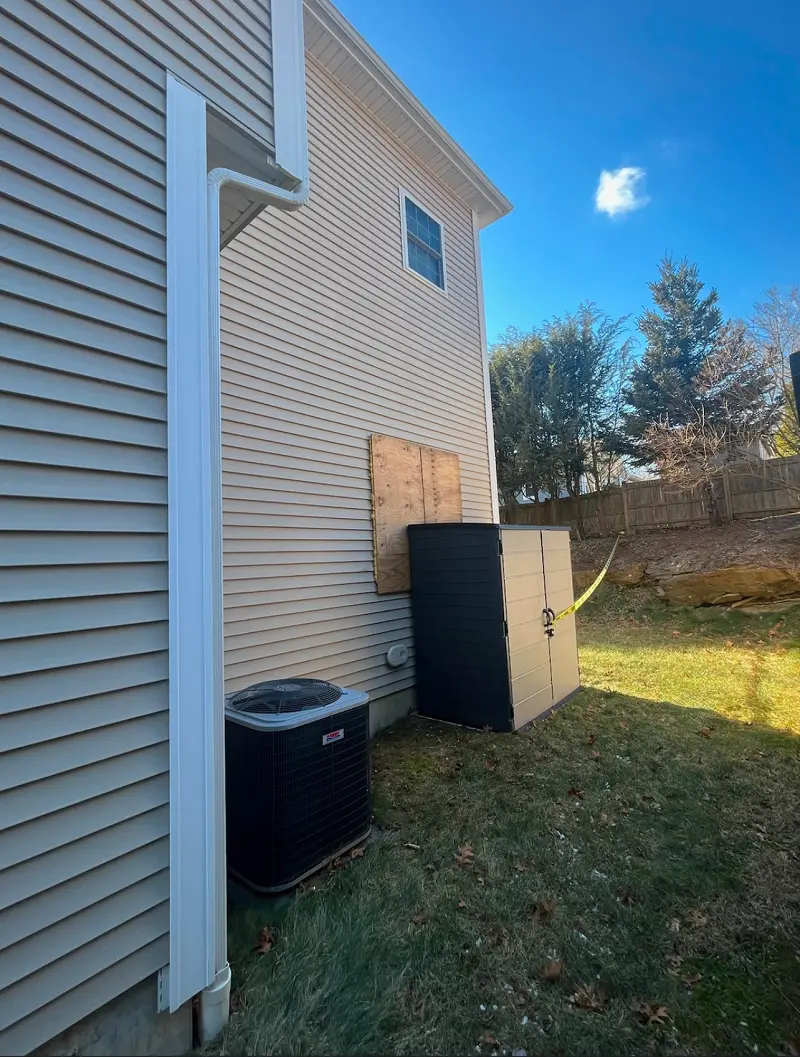
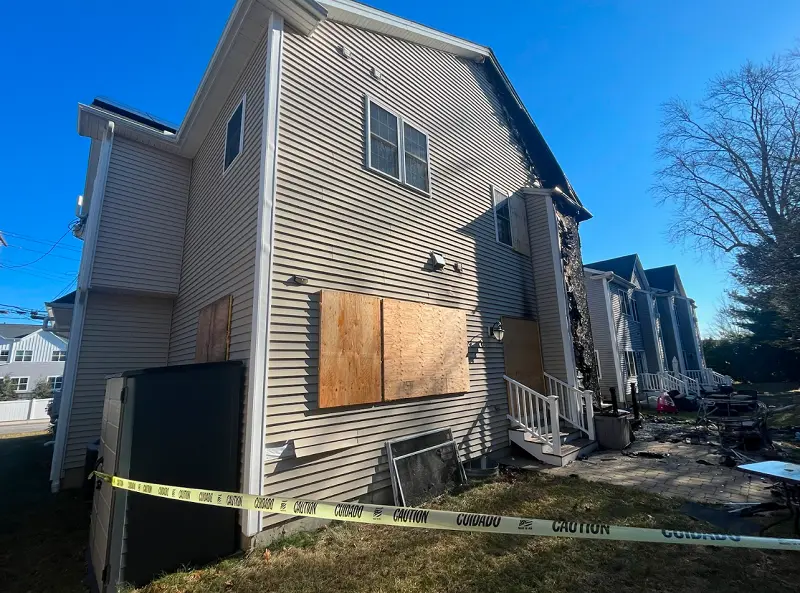
Securing The Property
Your fire-damaged house needs immediate protection from the elements. I’ve seen minor fire damage turn catastrophic when homes weren’t properly secured. Here’s what you need to do:
• Board up broken windows
• Lock and secure all entry points
• Cover roof damage with heavy-duty tarps
• Remove valuable items if possible
• Install temporary fencing if needed
Essential Contact Information
Keep these crucial contacts at your fingertips:
Primary Contacts:
• Insurance Agent: Policy and claim numbers
• Fire Department: Incident report details
• Building Department: Permit information
• Restoration Companies: At least three estimates
Secondary Contacts:
• Mortgage Lender
• Public Adjuster
• Real Estate Professional
• Debris Removal Service
• Temporary Housing Coordinator
Pro tip: Create a digital backup of all these contacts and related documents. I’ve seen too many paper records get lost or damaged during the cleanup process. Remember, good organization now saves countless headaches later.
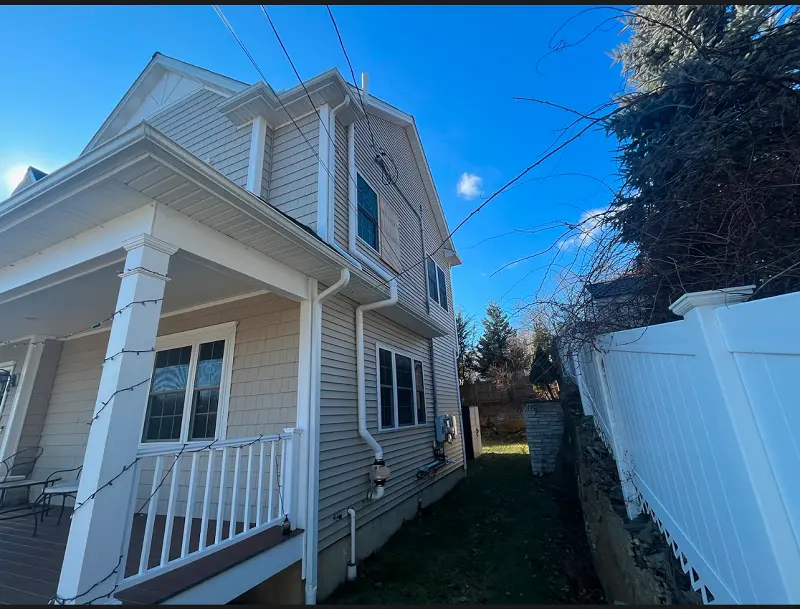
Evaluating Your Options
I’ve helped numerous Stamford homeowners explore the complex decisions after fire damage, and I know firsthand how overwhelming it can feel. Let’s break down your options to help you make the best choice for your situation.
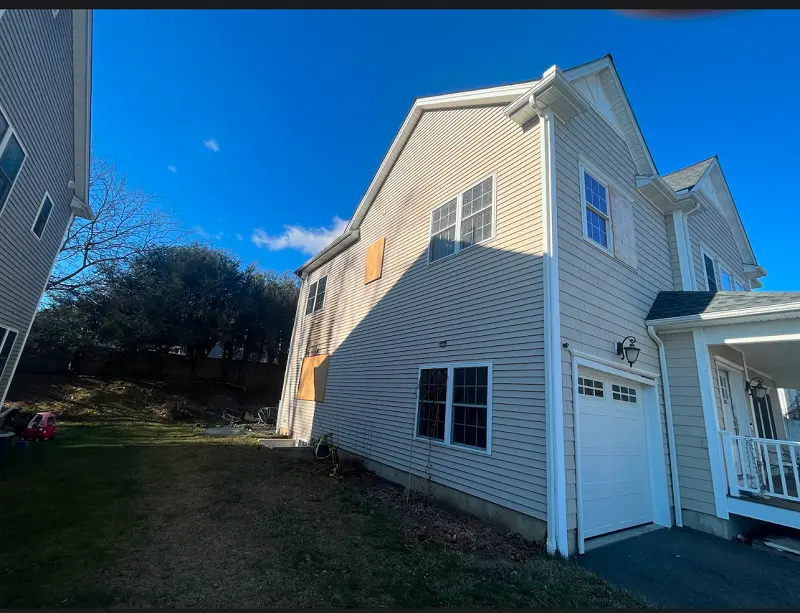
Selling As-Is Vs. Repairing
The biggest question I hear from homeowners is whether to sell their fire-damaged property as-is or invest in repairs. Here’s what you need to know: Local cash buyers and real estate investors regularly purchase fire-damaged houses as-is, typically closing within 7-10 days. While this offers a quick solution, investing in repairs could potentially yield a higher return.
Cost Analysis of Repairs
Before making your decision, you’ll want to gather multiple contractor estimates. Here’s what to include in your assessment:
• Complete structural repair costs
• Professional smoke damage remediation
• Water damage restoration services
• Electrical system overhaul
• Interior and exterior cosmetic improvements

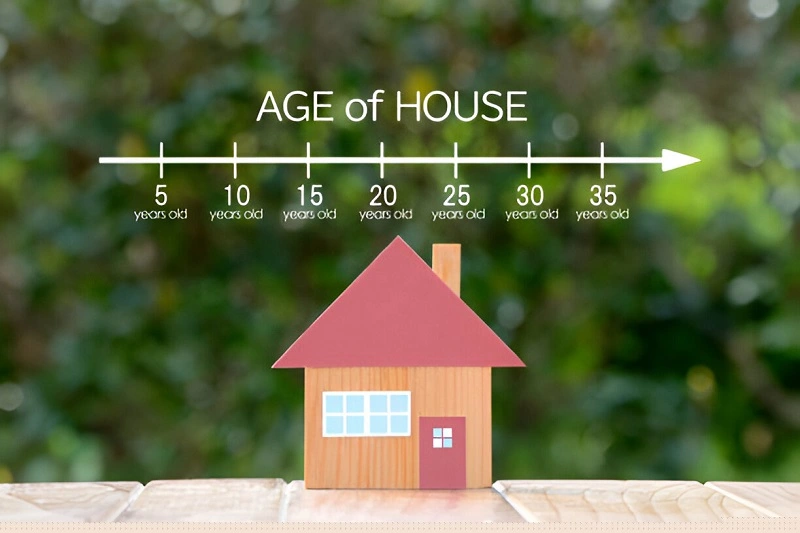
Timeline Considerations
I’ve seen repair projects stretch anywhere from 2-6 months, depending on damage severity and local contractor availability. Meanwhile, cash buyers can typically close within a week. Your decision should factor in:
• Monthly mortgage obligations
• Insurance coverage duration
• Personal living arrangements
• Financial carrying costs
Current Market Value Assessment
Working with experienced local realtors or property investors helps establish a realistic market value for your damaged property. Key factors affecting your home’s current worth include:
• Your property’s pre-fire market value
• The full scope of fire damage
• Recent sales of similar damaged properties
• Current Stamford real estate market trends

Financial Implications

Insurance Payout Considerations
Your insurance settlement plays a crucial role in determining your next steps. Consider how your payout aligns with:
• Total repair cost estimates
• Outstanding mortgage balance
• Relocation expenses
• Emergency housing needs
Tax Implications
Fire damage and property sales create unique tax situations that deserve careful attention. I always recommend consulting with a tax professional about
• Available casualty loss deductions
• Potential capital gains impacts
• Insurance settlement tax treatment
• Property basis adjustments
While repairing your property might seem like the best path to maximum value, don’t overlook the hidden costs. Consider monthly carrying expenses, repair timeline uncertainties, and the emotional toll of managing a renovation project.
Sometimes, the simplicity and speed of an as-is sale to a cash buyer prove more valuable than a potentially higher sale price months down the road

Types Of Fire Damage And Their Impact
Fire damage can turn your Stamford home-selling journey into a complex challenge. I’ve worked with numerous homeowners facing similar situations, and I’ve found that understanding the different types of fire damage helps create a clear path forward. Let’s explore how various forms of fire damage can affect your property’s value and marketability.

Structural Damage Assessment
Structural damage is the most concerning type of fire-related problem I encounter. Here’s what typically needs evaluation:
• Foundation weakening from intense heat exposure
•Compromised load-bearing walls that threaten stability
•Roof system damage affecting overall house integrity
•Floor joist deterioration that could lead to collapse
Having worked with many structural engineers, I can tell you their thorough evaluations are absolutely crucial. These assessments not only determine repair feasibility but also provide essential documentation for buyers and insurance companies.
Smoke And Water Damage
While flames create immediate visible destruction, I’ve seen smoke and water damage create equally devastating long-term issues. Smoke particles can silently infiltrate:
• Wall cavities and interior spaces
• HVAC systems, requiring extensive cleaning
• Electrical components, leading to future failures
• Insulation materials, requiring complete replacement
The water used to fight fires often causes these persistent problems:
• Aggressive mold growth in hidden spaces
• Material warping, especially in wooden structures
• Electrical system corrosion over time
• Foundation seepage causing basement issues
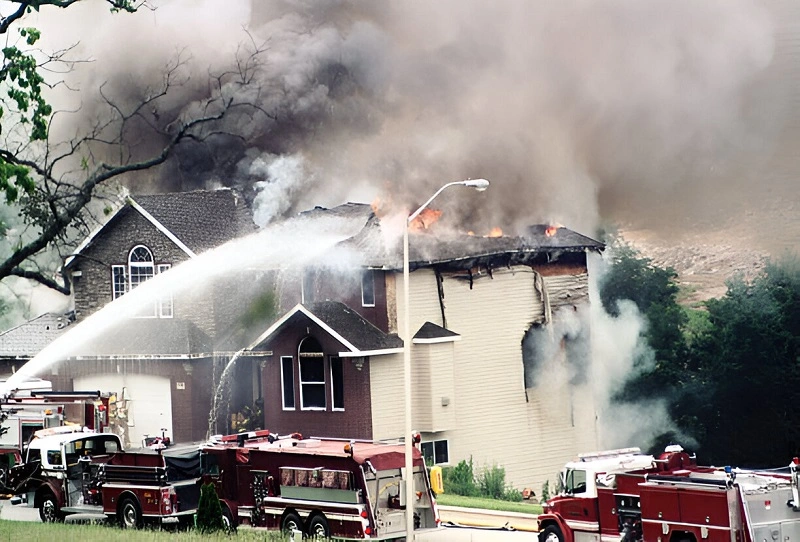

Hidden Damage Concerns
Through years of experience, I’ve learned that invisible damage often poses the biggest challenges. These concealed issues frequently emerge months or years after the fire:
• Unexpected electrical system malfunctions
• Stubborn smoke odors that resurface in humid weather
• Gradually weakening structural elements
• Ongoing air quality concerns affecting health
Professional inspectors use advanced thermal imaging and moisture detection equipment to uncover these hidden problems. This thorough investigation proves essential for accurate assessment and proper buyer disclosure.
Impact On Property Value
Fire damage inevitably affects property value, though I’ve seen the impact vary significantly based on:
• The severity and extent of the damage
• Restoration work quality and completeness
• Current market conditions in your area
• Specific property location and characteristics
Even after professional restoration, fire damage history can influence:
• Future insurance premium rates
• Long-term property marketability
• Available financing options
• Required disclosure timeframes
My experience shows that understanding these damage types helps set realistic expectations for your property’s value. While fire damage presents significant challenges, working alongside experienced professionals who specialize in fire-damaged properties can make a substantial difference in guiding the sale process successfully.

Selling Methods For Fire-Damaged Houses
When dealing with a fire-damaged house in Stamford, you’ve got several solid options for selling. I’ve helped numerous homeowners explore these choices, and each method offers unique benefits depending on your specific situation and timeline.
Cash Buyers And Investors

Benefits Of Cash Sales
Cash buyers and real estate investors have become my go-to recommendation for many sellers with fire-damaged properties. Here’s why they’re often the best choice:
• Lightning-fast closings (typically 7-10 days)
• Zero repair requirements – they buy truly as-is
• No hidden fees or closing costs
• Simplified paperwork process
• No staging or cleaning needed
Finding Reputable Buyers
Looking for trustworthy cash buyers in Stamford? Here’s what I’ve learned works best:
• Search for established local investment companies
• Comprehensively examine online reviews and testimonials
• Double-check their business licenses and credentials
• Contact previous sellers for references
• Get at least three offers to compare


Traditional Real Estate Market
Listing your fire-damaged house with a realtor might work well in certain situations. From my experience, consider this route if:
• Your property has minimal fire damage
• You’ve already tackled some repairs
• Time isn’t your primary concern
• You’re comfortable with buyer negotiations
• Maximum sale price is your priority
A realtor who specializes in damaged properties can be worth their weight in gold. They’ll know exactly how to market your property and set realistic price expectations based on current market conditions.
Auction Options
I’ve seen auctions work wonderfully for some fire-damaged properties. They’re particularly effective when:
You need a specific sale date
Your property might attract multiple investors
You want to spark competitive bidding
Traditional sales methods haven’t delivered
You prefer an open, transparent process


For Sale By Owner Approach
Want to take the reins yourself? Selling your fire-damaged house independently can save you money on commissions. Here’s what you’ll need to handle:
• Creating compelling marketing materials
• Managing property viewings
• Negotiating with potential buyers
• Handling all necessary paperwork
• Following Stamford’s disclosure requirements
A tip: Keep detailed records of all fire damage and repairs. Stamford law requires full disclosure of material defects, and being upfront about the damage builds trust with potential buyers.
Each selling method has its sweet spot. While cash buyers typically offer the smoothest path for severely damaged properties, traditional methods might yield better results for homes with minimal damage. Your timeline, property condition, and financial goals will guide you toward the best choice.
Legal Requirements And Disclosures
Exploring the legal aspects of selling a fire-damaged house in Stamford can feel complex, but I’ve helped many homeowners through this process. Let me share what you need to know to protect yourself and ensure a smooth transaction.
Stamford Disclosure Laws
Stamford law requires sellers to be completely upfront about their property’s condition. In the case of fire damage, here’s what you must disclose:
• You need a specific sale date
• Your property might attract multiple investors
• You want to spark competitive bidding
• Traditional sales methods haven’t delivered
• You prefer an open, transparent process
I’ve found that being transparent about these issues not only fulfills legal requirements but also builds trust with buyers and prevents potential lawsuits down the line.


Documentation Requirements
Think of proper documentation as your safety net during the sale process. Here’s what you’ll need to keep handy:
• Official fire department reports
• Insurance claim paperwork and assessments
• Detailed contractor estimates and repair records
• Results from any environmental testing
• Before-and-after photos showing damage and repairs
• All permits related to restoration work
Keep these documents organized in a folder or digital file – trust me, you’ll be glad you did when potential buyers start asking questions.
Liability Considerations
Selling a fire-damaged house comes with its share of risks, but there are ways to protect yourself. Even after the sale closes, you could face liability issues if you haven’t taken the proper precautions.
Following disclosure laws carefully is your best defense against future legal troubles. I always recommend working with a qualified attorney who can review your documentation and ensure you’re meeting all legal obligations.

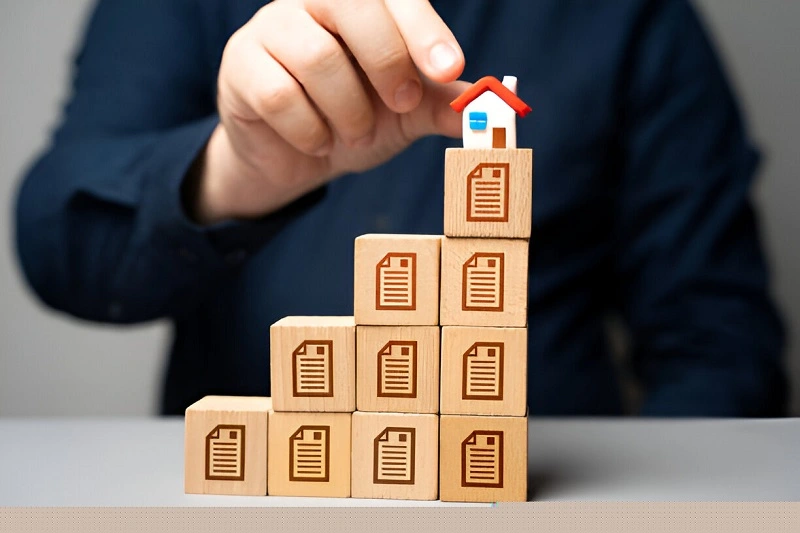
Required Permits And Inspections
Before putting your property on the market, you’ll need to complete several important steps:
• Get a structural safety inspection to confirm the building is sound
• Apply for and receive permits covering all repairs
• Have the electrical system thoroughly checked
• Complete any required environmental testing
• Obtain official certification that the house is safe to occupy
Traditional lenders often require additional inspections before approving a mortgage. Even if you’re working with a cash buyer, having these inspections and permits in order makes the process much smoother.
Each Stamford municipality has its own specific requirements for inspections and permits. I recommend checking with your local building department early in the process to understand exactly what you’ll need for your area.
Pricing Strategies
Setting the right price for your fire-damaged house in Stamford requires careful consideration of multiple factors. I’ve helped numerous homeowners work through this challenging process, and I can tell you that a well-thought-out pricing strategy often makes the difference between a quick sale and a property that remains unsold.
Market Analysis For Damaged Properties
Understanding your property’s current market value starts with a thorough analysis of similar properties in your area. From my experience working with fire-damaged homes, traditional comparable sales only tell part of the story. Here’s what you should look for:
• Recent sales of damaged or distressed properties in your neighborhood
• Time-on-market for similar fire-damaged properties
• Price differences between damaged and undamaged properties
• Current market conditions in your specific Stamford region
The most accurate way to determine your property’s value is through a professional appraisal from your mortgage lender or by partnering with a local realtor who specializes in distressed properties. These experts can provide realistic estimates based on your home’s current condition and location within the Stamford market.
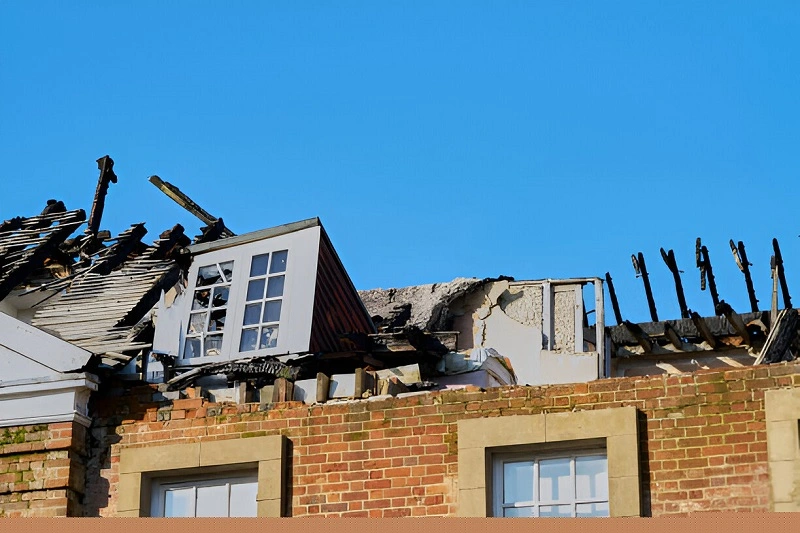
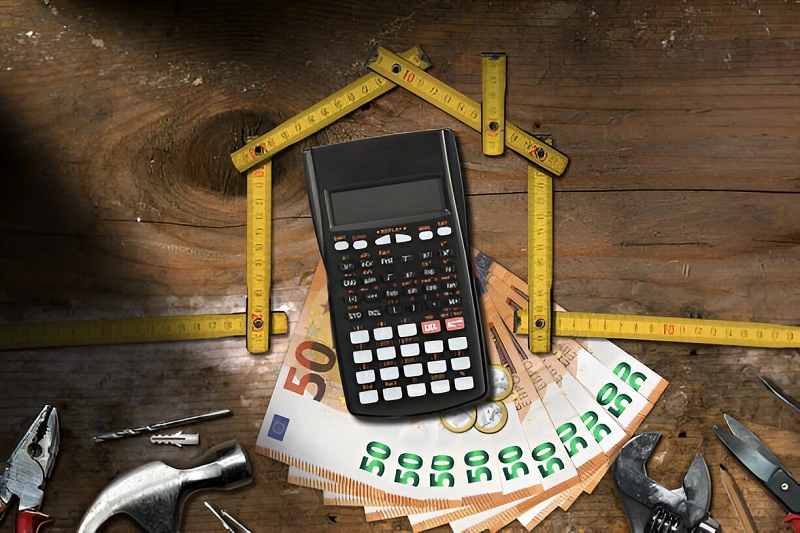
Factoring In Repair Costs
When pricing your fire-damaged house, you’ll need to account for these essential repair costs:
• Structural damage assessment and repairs
• Smoke and water damage remediation
• Electrical system evaluation and updates
• HVAC system repairs or replacement
• Cosmetic repairs and renovations
• Required code compliance updates
Your property’s final asking price should reflect these repair costs, as potential buyers will factor them into their offers. I’ve found that investors and cash buyers typically expect a 20-30% discount to account for the work they’ll need to perform and the risks they’re taking on.
Negotiation Considerations
Successful negotiations require understanding both your position and the buyer’s perspective. Here are the key factors I’ve seen influence deals:
• Buyer’s intended use (renovation vs. demolition)
• Current market demand for fixer-upper properties
• Local construction costs and contractor availability
• Seasonal market variations in Stamford
• Urgency of your sale timeline
• Insurance settlement status
The key to successful negotiations is maintaining flexibility while knowing your bottom line. Cash buyers often present lower initial offers, but they can provide valuable benefits like quick closings and as-is purchases. These advantages become particularly important when you’re dealing with the stress of managing a fire-damaged property.
Remember that the final sale price isn’t your only consideration. Terms like closing timeline, repair responsibilities, and whether the buyer will cover closing costs can significantly impact your bottom line. In my experience, accepting a slightly lower price often makes sense when the overall terms better align with your immediate needs and long-term goals.

Frequently Asked Questions
I’ve seen various timelines in the Stamford real estate market, and it really comes down to your selling approach. Working with cash buyers or real estate investors typically leads to a quick closing within 7-10 days.
Going the traditional route through a realtor? That usually takes several months, since finding buyers comfortable with damaged properties requires more time and patience.
Your coverage largely depends on your specific policy and damage extent. While most standard homeowner’s insurance policies include fire damage protection, the payout might not match your home’s pre-damage value.
From my experience handling insurance claims, your best bet is to work closely with your insurance adjuster. Document everything thoroughly – take photos, save receipts, and keep comprehensive notes to ensure you receive fair compensation within your policy terms.
Absolutely! Having a mortgage doesn’t prevent you from selling your fire-damaged property. You’ll just need to make sure the numbers work out.
The sale price should cover your remaining mortgage balance, or you’ll need to prepare to pay the difference at closing. Here’s some good news: your insurance payout can often help bridge any gaps between your mortgage balance and what buyers are willing to pay.
In Stamford’s real estate market, cash buyers and real estate investors are your most likely buyers for fire-damaged homes. These professionals specialize in rehabilitating distressed properties and offer several advantages:
• Quick closing timelines
• Coverage of all closing costs
• As-is purchases with no repair requirements
• Experience with fire-damaged properties
• Straightforward transaction process
When evaluating offers that seem low, I always recommend looking at the complete picture. Consider these key factors:
• Closing timeline flexibility
• Buyer’s closing cost coverage
• As-is purchase terms
• Buyer’s proof of funds
• Contingency requirements
Sometimes, accepting a lower offer with favorable terms proves more beneficial than holding out for a higher price that comes with strings attached. I’ve seen sellers benefit more from quick, guaranteed closings than from waiting months for potentially better offers that might never materialize.
What You Should Do After A House Fire In Stamford
In the aftermath of a house fire in Stamford, immediate actions are crucial to address the situation. Here are the steps you should take:
Quick Checklist
1. Contact the fire department for a report.
2. Speak with your insurance company to assess any damage.
3. File an insurance claim.
4. Adhere to legal disclosure requirements when selling a fire-damaged house in Stamford.
Depending on your decision to repair or sell the fire-damaged house, you will need to:
1. Assess the damage
2. Contact insurance
3. Obtain multiple quotes
4. Budget for unexpected expenses
5. Work with insurance to get your payout
6. Complete repairs
7. List on the market
Collaborating with an adjuster can assist in evaluating damage and repairs and guarantee an equitable settlement when submitting a fire insurance claim.
Sell Your House After A Fire For Cash in Stamford Today
I’ve helped many Stamford homeowners work through the challenges of selling fire-damaged properties, and I can tell you firsthand – it’s not as challenging as it might seem. You’ve got several practical options to choose from:
• Working with cash buyers for a quick, hassle-free sale
• Listing on the traditional real estate market
• Partnering with local real estate investors
Here’s something crucial I’ve learned: transparency builds trust and protects everyone involved. Stamford law requires full disclosure of fire damage, and being upfront about your property’s condition helps create smoother transactions and prevents potential legal issues down the road.
Let’s break down what matters most when making your decision:
• Extent of fire damage
• Your timeline requirements
• Financial goals and expectations
• Current market conditions
• Available restoration resources
I’ve seen firsthand how local real estate investors and cash buyers specialize in these situations. They understand the unique challenges of fire-damaged properties and often provide solutions that traditional buyers can’t match.
Think of this as your turning point – not your setback. Fire damage doesn’t have to define your property’s story or limit your options. Many of my clients have successfully sold their fire-damaged homes and moved forward with their lives, often more quickly than they expected.
Ready to explore your options? Local cash buyers and real estate investors who specialize in fire-damaged properties are just a call away. Take that first step today – you might be surprised at how many solutions are available for your specific situation.
Sell Fire Damaged House Stamford!
If a simple home sale that closes on your schedule sounds like what you need, come check us out. You can request a free quote for your house by filling out our form below!
We’ll Give You A No Pressure As-Is Cash Offer in 24 Hours
We’re Local, Can Close in 10 Days, Fast Cash
